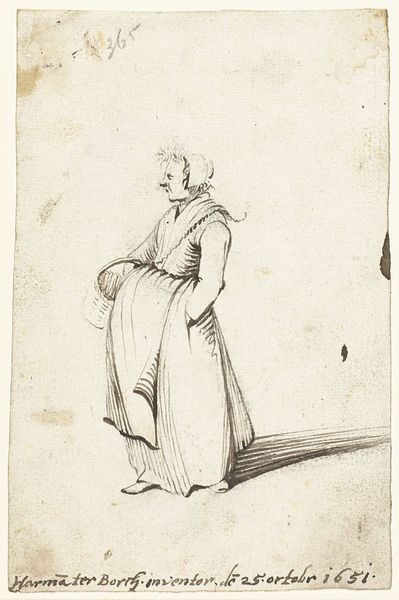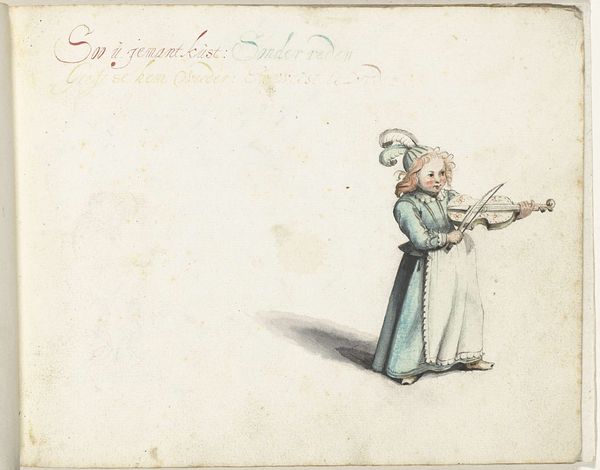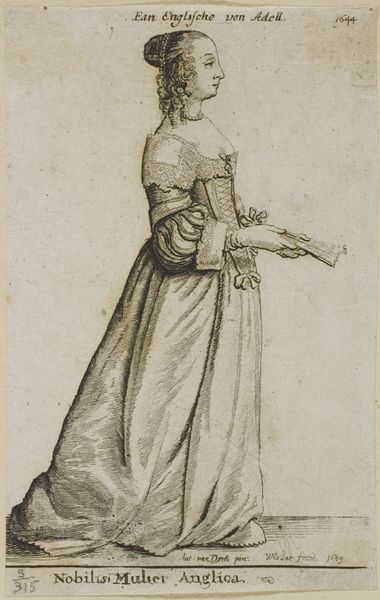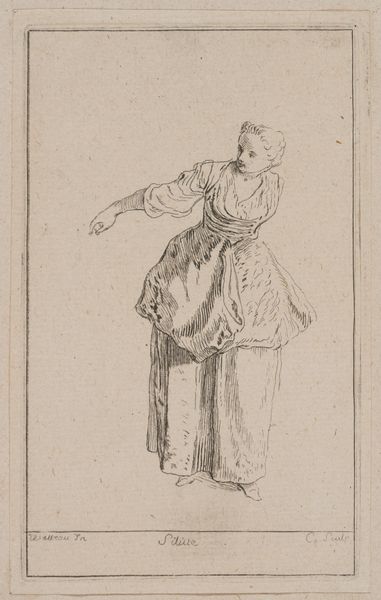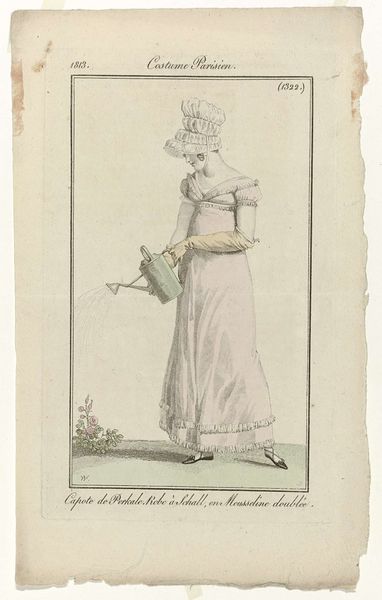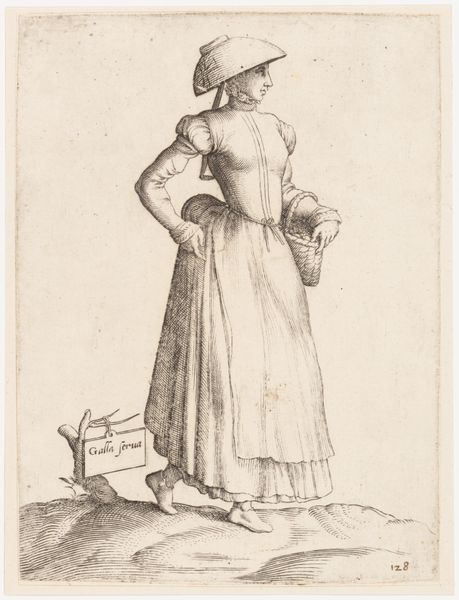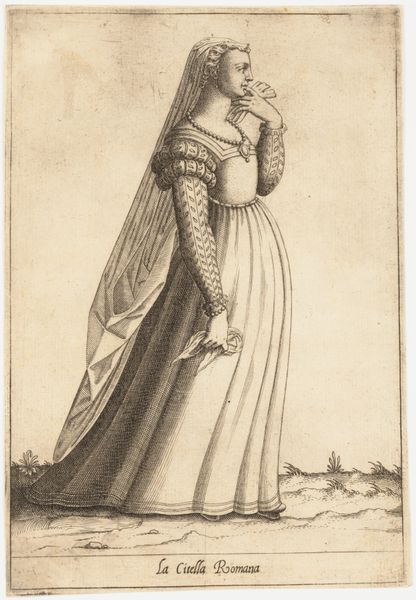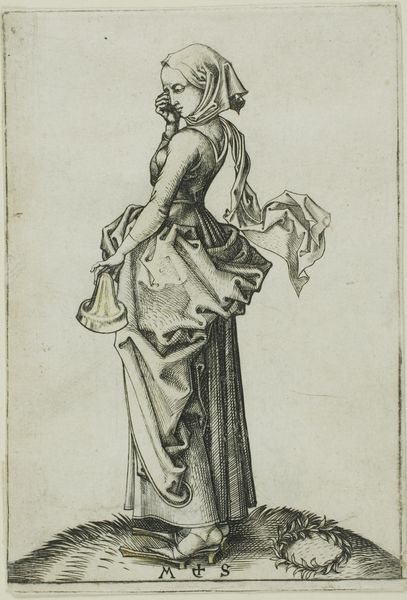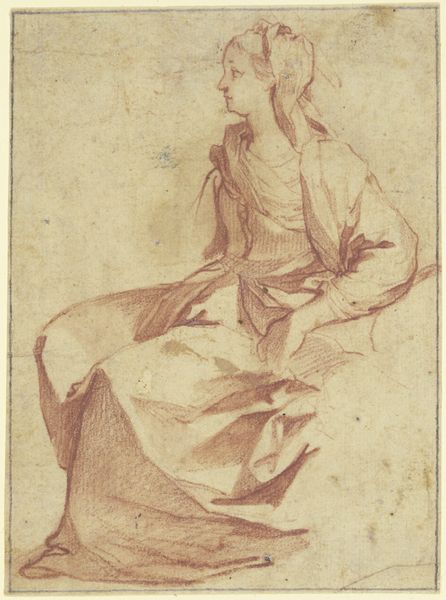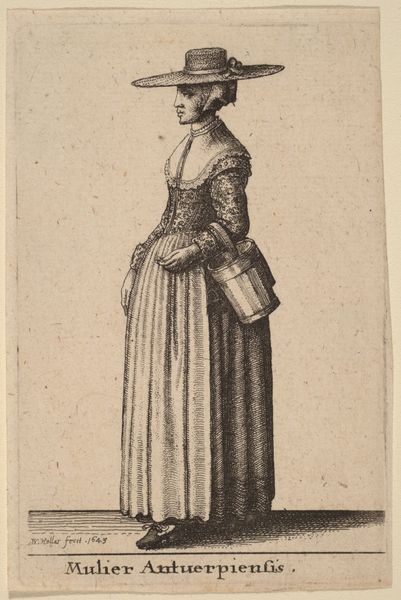
drawing, paper, watercolor
#
portrait
#
drawing
#
water colours
#
dutch-golden-age
#
paper
#
watercolor
#
coloured pencil
#
genre-painting
#
mixed media
Dimensions: height 104 mm, width 80 mm
Copyright: Rijks Museum: Open Domain
Curator: I’m drawn to the economy of line in Gesina ter Borch’s "Standing Woman with Raised Arm," created around 1648. What’s your initial reaction? Editor: It's quite gestural, isn't it? The watercolour feels very immediate and unassuming; almost like a study of posture and fabric. The limited palette emphasizes the texture of the material of her dress and ruff. Curator: Absolutely. And I think understanding ter Borch’s position is key. As a woman artist in the Dutch Golden Age, her access to formal training was limited. The intimate scale of works like this, and their frequent categorization as “genre paintings,” obscures the quiet radicality of her observant eye. She subtly negotiates her own agency through representation. Editor: Yes, there’s an intimacy that makes me consider its making – was it produced for personal study, as a record of her attire, or even an experiment in colour-mixing? The physical creation of watercolour is also tied to a set of labor conditions; the ground pigments, the animal-hair brushes... Curator: Precisely, think of the domestic space as a locus of creative production! The raised arm… does it signify authority, or is it simply a moment frozen in the everyday? The act of observation itself becomes an assertion of power for Ter Borch. Editor: I notice the lines that render her garments. Ter Borch carefully uses these strokes, with her watercolor on paper, not only to illustrate form, but also to suggest different textile weights and textures, playing on contrasts between smoothness and the rigidity of the ruff, using her understanding of the craft to amplify our sense of realism. Curator: So true! We can read so much into her understanding of the interplay between surface and depth, between the representation of female experience and her own authorial stance. It highlights how her artistic practice navigates the societal constraints of her time. Editor: Agreed. Analyzing Ter Borch’s manipulation of everyday materials like watercolor allows us to re-evaluate gendered hierarchies within craft and production, challenging historical power dynamics and inviting further study. Curator: It seems through this quick but considered watercolor portrait, ter Borch offers a compelling study not just of a standing woman, but of an artist asserting her perspective within the limitations imposed upon her. Editor: Indeed, a simple method revealing layers of complexity regarding production, materiality, and historical context!
Comments
No comments
Be the first to comment and join the conversation on the ultimate creative platform.
